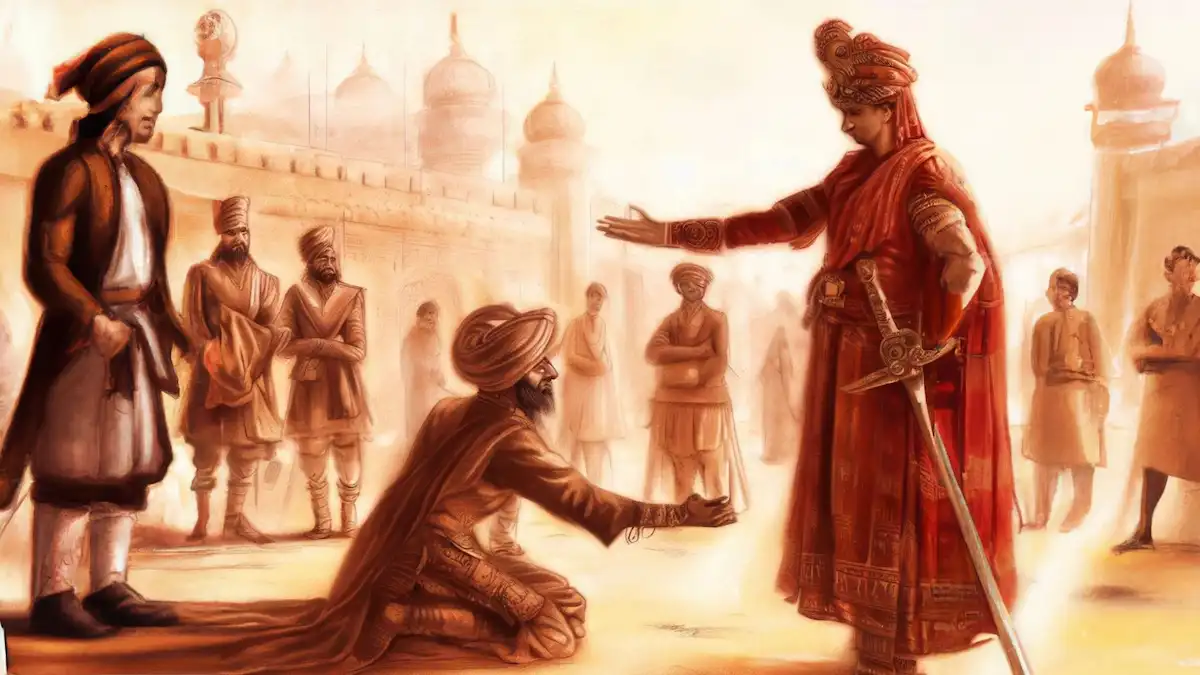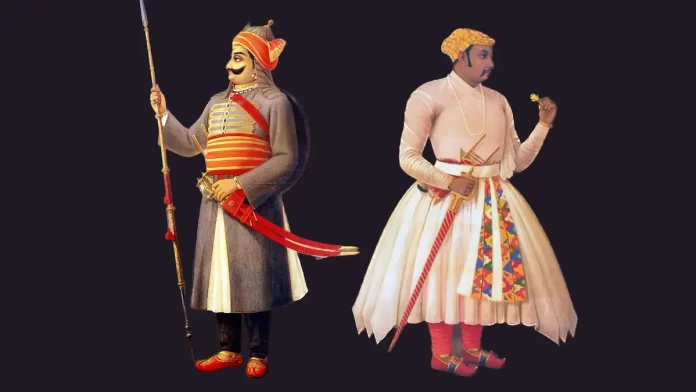Maharana Pratap was a medieval Rajput ruler often gloried by Hindu-Brahmanical right wings for his adamant defiance and refusal to submit to the powerful Mughal India.
According to historian Satish Chandra – “Rana Pratap’s defiance of the mighty Mughal empire, almost alone and unaided by the other Rajput states, constitute a glorious saga of Rajput valour and the spirit of self sacrifice for cherished principles”.
While all major Rajput states formed political and marital alliances with the various Muslim dynasties of Delhi including Mughals, Maharana Pratap gained distinction for his refusal to form any alliance with the Mughal Empire.
Legacy of Intergenerational Conflict
He continued the long standing legacy of Mewar’s intergenerational conflict with the Mughals which started with the defeat of his grandfather Rana Sanga by Babur in the Battle of Khanwa in 1527 and continued with the defeat of his father Udai Singh II in Siege of Chittorgarh in 1568.
Initially, Rana Pratap tried to follow a passive strategy of appeasing Mughals as he sent his son and successor Amar Singh to the Mughal Court, but himself like his father refrained from personal attendance in the imperial capital.
Mistreatment of Mughal Commander
Mughal Emperor Akbar while appreciated the Rana sending his young son in his service but wanted the Maharana to appear and serve in person.
However, the hotheaded Rana not only refused to submit in person but also mistreated the imperial commander-in-chief Raja Man Singh by not cordially receiving him. He even refused to have meal with him.
For the unversed, Man Singh was not only a very high ranking Mughal commander but also the brother-in-law of the Indian Emperor.
Thus, activities of Pratap Singh brought Mughals to Mewar once again and in the subsequent engagements, Mughals won nearly all the engagements inflicting terrible slaughter on Mewaris.
Battle of Haldighati and Aftermath
In the famous battle of Haldighati, he was badly defeated and wounded and had to surreptitiously escape to save his life from the wrath of Mughal general Rana Man Singh of Amber, a close relative of the Emperor whom he had insulted earlier.
While Rana Pratap managed to successfully escape the battlefield with the help of brave Bhil soldiers, Man Singh subsequently captured most of Chittor, Mewar, Udaipur, and Kumbhalgarh which were all brought under Indian dominion.
It is said that years later Akbar generously returned him most of the conquered areas after impressed by Rana’s bravery.
However, the upper caste Rana nursed such a great grudge against Mughals that even on his deathbed he was telling his son and successor Amar Singh I to never submit to the Muslim Mughals and to win Chittor back.
Did his son oblige his father’s last wishes? He reportedly carried on the campaigns against Mughals for some years before finally submitting himself to Mughal suzerainty in a quite surprising manner.
Surrender Ritual before Mughal Prince
There were strict guidelines from the Jahangir’s side to Prince Khurram (later Shahjahan) to treat the Rana honourably as Jahangir notes:
WHEN RANA CLASPED HIS (KHURRAM’S) FEETS AND ASKED FORGIVENESS FOR HIS FAULTS, HE TOOK HIS HEAD AND PLACED IT ON HIS BREAST AND CONSOLED HIM IN SUCH A MANNER AS TO COMFORT HIM.
Abraham Eraly (2007). Emperors of the Peacock Throne: The Saga of the Great Moghuls

Due to his old age, Amar Singh was not asked to attend the Mughal Court in person and Mewar including Chittor was assigned to him as Watan Jagir.
The successor of Amar Singh, Karan Singh on the other hand was given a rank of 5000. Mughals on the other hand secured their interest by prohibiting the fortifications of the Mewar.
Terms of the Treaty
Further, in the treaty, it was agreed that:
- The ruler of Mewar, will not be bound to present himself in person at Mughal court, instead, a relative of the Rana would wait upon the Indian Emperor and serve him.
- It was also agreed that the Ranas of Mewar would not enter matrimonial relations with the Mughals.
- Mewar would have to keep a contingent of 1500 horsemen in the Imperial service.
- Chittor and other Mughal occupied areas of Mewar would be returned to the Rana, but Chittor fort would never be repaired. The reason for this last condition was that the Chittor fort was a very powerful bastion and the Mughals were wary of it being used in any future rebellion.
- The Rana would be given a Mughal rank of 5000 zat and 5000 sowar.
- The rulers of Dungarpur and Banswara (who had become independent during Akbars reign) would once again become vassals of Mewar and pay tribute to the Rana.
- Later, when Amar Singh went to meet Jahangir at Ajmer, he was given a warm welcome by Mughal Emperor and the territories around Chittor along with the Chittor Fort were also given back to Mewar, as goodwill gesture.
Thus in this honourable manner, the 48 years long war of attrition between the Mughal Empire and a defiant Rajput state came to an end.
